In latest Business Record survey results, see what 20 Iowa businesses and organizations are offering
By Emily Kestel, graphics by Lauren Burt

For decades, women have generally worked in environments designed by men, for men.
Standard office temperatures are based on the metabolic resting rate of a 40-year-old man. Mandatory meetings are often scheduled at the same time as school dismissals. There are often no designated spaces for lactation. There isn’t federally guaranteed access to paid leave after having a baby.
Even the concept of the 40-hour workweek was designed for men with the assumption in mind that they had wives at home to manage domestic responsibilities and raise the children – not with the scenario of both parents working out of the home, as is common now.
For the first time, in 2019, women made up half of the American labor force. Then in 2020, millions of women dropped out of the workforce to the point where the women’s labor force participation rate was at a number not seen since the late ’80s.
As employers continue the quest to usher people back into the workforce and into the office, experts are sensing a turning tide in the way leaders think about what the modern workplace could and should look like.
After 2020, companies have dramatically shifted policy priorities, as illustrated in Lean In’s 2021 Women in the Workplace report. Some examples:
- Before 2020, 67% of companies offered paid family leave. Now 84% do.
- Before 2020, 45% of companies offered support for employee resource groups. Now 80% do.
- Before 2020, 37% of companies offered mental health support. Now 97% do.
- Before 2020, 29% of companies offered support for parents. Now 71% do.
- Before 2020, 27% of companies offered flexible working hours. Now 88% do.
In our inaugural workplace benefits survey, the Business Record took a look at what some Iowa businesses and organizations are doing to support their employees at and outside of the workplace.
| About the surveys In a pair of surveys about gender issues and women in the workforce, the Business Record asked readers about workplace policies and practices that are known to affect women’s participation and success. The gender issues survey is a continuation of an annual effort to shine light on issues that women face in the state. The workplace benefits survey was new this year, and was meant to provide a space for business leaders to share their benefits, policies and practices. Between Feb. 21 and March 6, a total of 286 people took the gender issues survey while 70 people took the workplace benefits survey. Just under 20 people included their names and organization in the workplace benefits survey. The organizations that were named were: Palmer Group, John Deere, Baker Group, Sarah Noll Wilson Inc., ITA Group, Des Moines University, Storey Kenworthy, Athene, the Beacon, Historic Valley Junction Foundation, Iowa Center for Economic Success, University of Northern Iowa, Happy Medium, World Food Prize Foundation, city of Urbandale, Hy-Vee, Fareway and Bankers Trust. Some responses have been edited for clarity. Questions that appeared in our gender issues survey are noted with an asterisk. |
What must be done to help bring women back into the workplace and keep them there?*
Clear themes emerged from the 71 responses. Almost all of them mentioned flexibility, access to child care, fair and adequate pay, or paid family leave. Other respondents mentioned that a recognition for their work would help.
- “We are in a time of incredible disruption and we have an opportunity to fundamentally rethink how we approach work and our world. Access to affordable or free child care would be transformative. Truly flexible work schedules where pay isn’t tied to hours in the seat, but output produced.”
- “It is truly unfair to force employees who have been successful at working effectively from home to go back to an office full-time. After getting a taste of it and realizing all the personal benefits, I never want to go back to an office full-time.”
- “Pay them enough so they can afford to work. Help with child care if that’s an issue. Be flexible in work hours as needed to accommodate individual situations. Genuinely respect and reward them in various ways for their work. Recognize they likely are working to live, not living to work.”
What perks or benefits do you look for in a workplace?*
Of the 64 responses, the most common answers were flexibility, health care benefits, child care support, a solid retirement plan, paid family leave and a respectful culture where their work is valued. When we asked Megan Milligan about the benefits and policies in place at the Iowa Center for Economic Success, she said, “We have really, really high expectations, but we give all the tools and resources the employee needs to get there. … We compassionately usher you through our very high expectations of you.”
- “Basic needs are taken care of in an extraordinary way. People are paid fully for the worth and value they bring. So many companies say that those in customer service are the most important roles and yet they were often some of the lowest paid. I’m interested in benefits that are designed to serve the humans they impact most and not just the bottom line. And as a business owner, I understand that sometimes what you want to offer may be different than what you can, but there is always room to get creative. An organization that I think is a role model in human-first benefits is Girl Scouts of Greater Iowa led by the phenomenal leader Beth Shelton. They are always creating new ways to support their staff that will be inclusive and meaningful. Just look at their program that allows parents to bring their baby in until they are 6 months or start crawling. When we talk about building inclusive cultures we have to be willing to challenge the ‘rules’ we’ve created around what work needs to look like and consider bold new possibilities.”
- “Paid family leave and sick days that can also be used when children or dependent adults or aging parents need support. Time off with pay to vote. Vacation and personal time. Paid assistance with further education relevant to the job. Access as needed to a mentor and the individual to whom they report.”
- “Comfortability and respect between coworkers. Management that respects their team. Appropriate raises and growth within the workplace. The ‘little extras’ that show appreciation the company has for the employees.”
- “A workplace that respects employees’ non-work boundaries. A workplace that understands that people have lives outside of work that will sometimes intrude on their work hours. A workplace that not only provides a lot of paid holidays and paid vacation but expects you to take it. A workplace that cares about employees as people and not just as means of production.”
- “Freedom. Autonomy. Respect. Confidence in my skills and ability to make decisions, and a rigid stance against micromanaging.”
Does your company have flexible work policies?

While many jobs, including food service, manufacturing and retail, cannot be done from home, flexibility is often listed as the No.1 policy that companies should continue to implement post-pandemic if they want to retain employees. But some experts worry that remote work will hold women back. One scientist referred to a bias favoring those who are in the office, which may keep remote workers from getting promotions and stepping into leadership positions.
Examples of policies included:
- “The Beacon has unlimited, guilt-free paid time off for salaried staff. No more tracking quarter hours, stressing over whether or not to take time off for an appointment, or saving up for vacations. When you need a mental health day, you take it! When you need a mental health week, you take it! As the executive director, I never average more than 40 hours per week so that my staff do not see overworking themselves as an expectation. The fear is that these kinds of practices will reduce productivity, but they actually increase it. We’ve had an incredibly successful year, a healthier staff, and a significant reduction in employee turnover.” – Melissa Vine on behalf of the Beacon
- “We work from home two days a week, have Fridays off between Memorial Day and Labor Day without increasing Mon-Thurs hours and we offer flexibility for special circumstances. We also have the week between Christmas and New Year’s off. [That being said], just because our hours end at 4:30 p.m. doesn’t mean you’re not going to sometimes do work at 7 p.m. There’s Fridays in the summer where all of us have had to work and nobody grumbles about it, because the policy is also that you get your work done.” – Megan Milligan on behalf of Iowa Center for Economic Success
- “You choose your schedule. The team can work from anywhere. We also have a weekly mental health hour for each team member.” – Katie Patterson on behalf of Happy Medium
- “Full-time team members work an average of 32 hours a week with no reduction of pay or benefits. We have set expectations for timing related to client work and team members. Otherwise, my colleagues manage their work during the week based on their needs. If they need to run an errand or take a nap because they are tired, they find time during the week to catch up. We explored doing a 4 day work week and at this point the preference was to have flexibility across the whole week instead of condensed work days.” – Sarah Noll Wilson on behalf of Sarah Noll Wilson Inc.
What does the ideal family leave policy look like?*
- “One that never puts people in a situation where they have to sacrifice their family needs for the needs of an organization. We also need to expand our definition of family to move beyond just those with children or related by blood. Often those who are single, without children, or who have chosen family may not have the same access to the same benefits.”
- “Allow parents to use vacation time, short-term disability or unpaid time off to take the time they need, but no longer than 12 weeks.”
- “I believe there should be full pay for up to 16 weeks for both parents and after 16 weeks it can be half pay up to 20 weeks then after 20 weeks it would be short-term disability pay or long-term disability pay. I believe it should include immediate family and for time off for a situation that can include sick parents, children or siblings.”
- “One where the birthing parent is at a place where they can say they are ready to return to work. This means being physically and mentally healthy and in a state where you feel your infant is in competent, quality care.”
Should maternity leave and paternity leave (also commonly combined to be called family leave) be equal in length?*
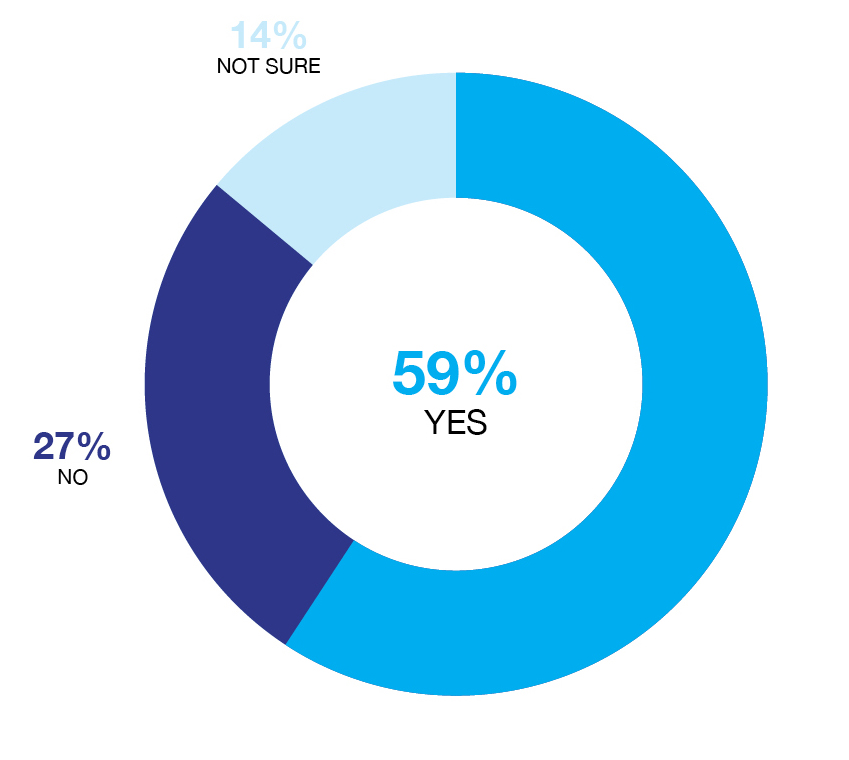
Arguments in favor of having the same amount of leave available for both birthing and nonbirthing parents say that doing so helps set a precedent that parenting a child shouldn’t just fall on one person. Arguments against it say that the birthing parents deserve more time to recover physically.
- “Not all leave is related to giving birth. Individuals can adopt or have a surrogate.”
- “Why is it only up to the mother to care for the baby in the first several months? As a same-sex couple, we both want to be there to bond, care for, and nurture our child at the beginning especially.”
- “By providing equal time off, it sets the precedence in that workplace that both men and women are equal.”
- “Our society needs to value fathers as much as mothers from day one. If fathers were more valued, they would start to take on more of the day-to-day care that overburdens mothers. When mothers are the ones arriving late or leaving early or taking time off to take children to appointments, women are perceived as less committed employees who deserve lower pay and don’t deserve promotions. We need to rethink family dynamics and acknowledge that people have important lives outside of the workplace.”
- “Parental leave should be equal in length, but a birthing parent needs an additional short term disability in addition to parental leave. Any parent should get the same amount of time to bond with a new child, but medical rehabilitation should not count as part of the bonding time.”
- “I understand the need for dad to have some bonding time but there is something unexplained/undefined about a mother with her baby. She just carried the child for 9 months and between nursing, recouping and bonding that is different from a dad and baby. I agree there should be some paternity leave but not to the extent of the mother.”
- “Mothers need more time in order to physically recover from the experience and adjust mentally.”
How many weeks of paid family leave do you feel parents should be entitled to?*
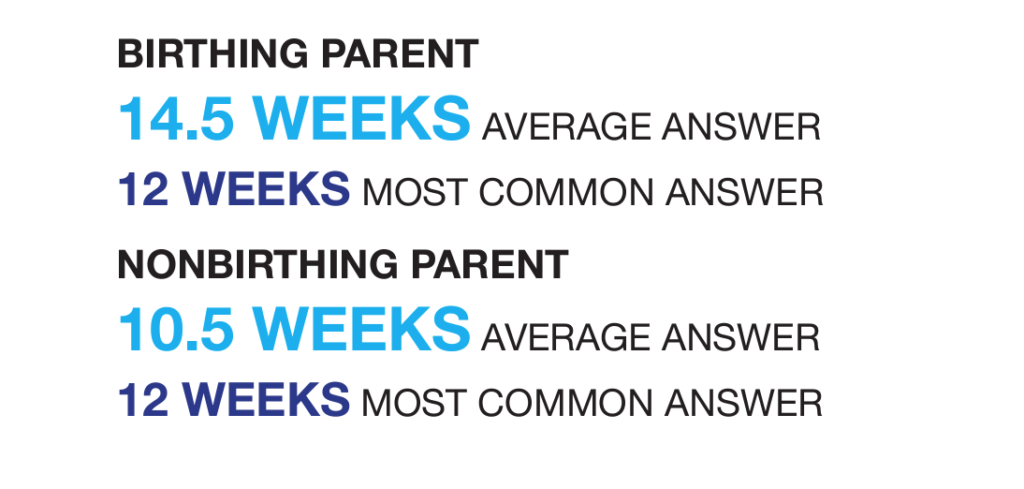
Respondents were given choices ranging from zero weeks to more than 20 weeks. The most common answer for both birthing parents and nonbirthing parents was 12 weeks. A similar question was posed to Business Record readers in 2016. That year, instead of “birthing parent” and “nonbirthing parent,” it referred to “women” and “men.” The average response that year for women was 11.5 weeks and 7.6 weeks for men, and the most common answer that respondents selected was 12 weeks.
Does your company offer paid parental leave?
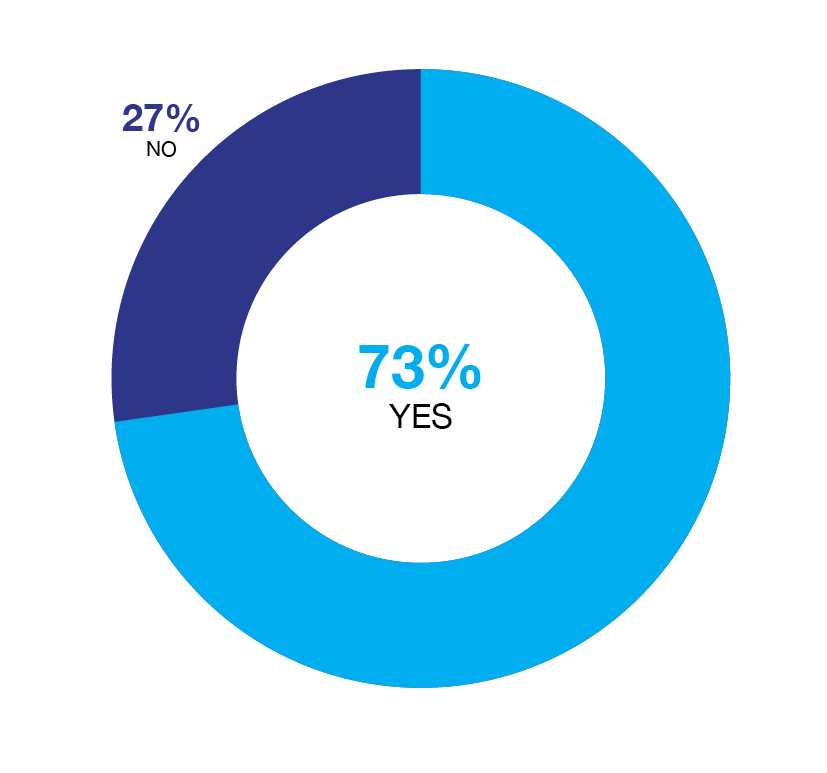
Policies listed by respondents varied widely. Some mentioned policies where the birthing parent is partially paid for six weeks. Some respondents said their employers’ policies were tiered, where the longer you work at the company, the longer the leave you get. Other responses said it’s covered only through disability insurance or by using sick leave.
- “Four weeks of time off paid at 80% for both parents, which can be supplemented with paid time off to reach 100% of pay. For birthing parents, an additional eight weeks is available.” – Amanda Young on behalf of Bankers Trust
- “Two weeks at 100% pay for both parents and nonbirthing parents.” – Chad Carter on behalf of Fareway
- “Twelve weeks at 100% pay for moms, dads and adoptive parents.” – Happy Medium
- “Six weeks at 100% pay for any parent in any way they become a parent. Children are allowed at the office full-time until they are walking. Any children are allowed in the office on occasion that child care or school is cancelled. Day care is grossly expensive. We’re a nonprofit, so while we pay fair wages, nobody’s getting wealthy at the Iowa Center. I don’t want to lose somebody because they do the math and they realize that paying for child care doesn’t make it worth it to keep working.” – Iowa Center for Economic Success
- “For birthing parents who are employees with at least one year of service, they are eligible for 13 weeks of paid leave at 100% of pay. For employees with less than one year of service, they are eligible for paid leave under our short-term disability policy at 60% of pay. Nonbirthing parents who have at least one year of service are eligible for two weeks of 100% pay.” – Shelle Eggermont on behalf of Athene
- “Two weeks paid full for birthing and nonbirthing parents, can use short-term disability coverage for an extended period of time for the birth and adoption of children.” – Georgia Van Gundy on behalf of Hy-Vee
Does your company offer bereavement leave?
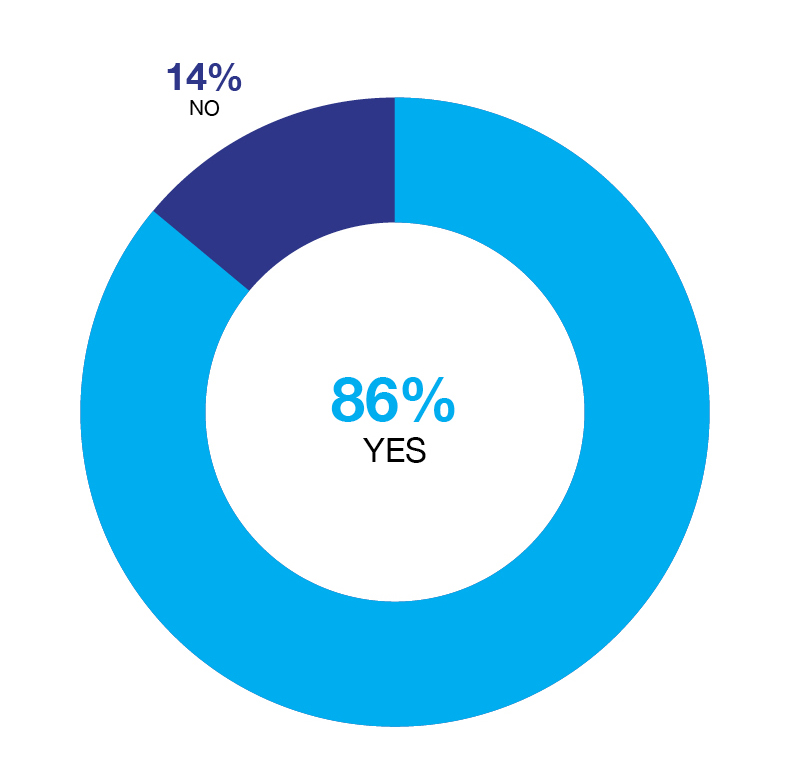
Bereavement leave is a common benefit that many companies and organizations offer. Most of the responses in our survey mentioned a range between two and five days off for an immediate or extended family member’s death.
New to the national conversation around bereavement leave, though, is adding a loss of pregnancy to the list of eligible situations. Between 10% and 15% of known pregnancies end in miscarriage, yet there’s no federal requirement to provide paid time off after pregnancy loss. Last year, the Waterloo City Council and Kum & Go were two Iowa organizations that added pregnancy loss in their bereavement policies.
Is access to mental health covered under your company’s health insurance plan?
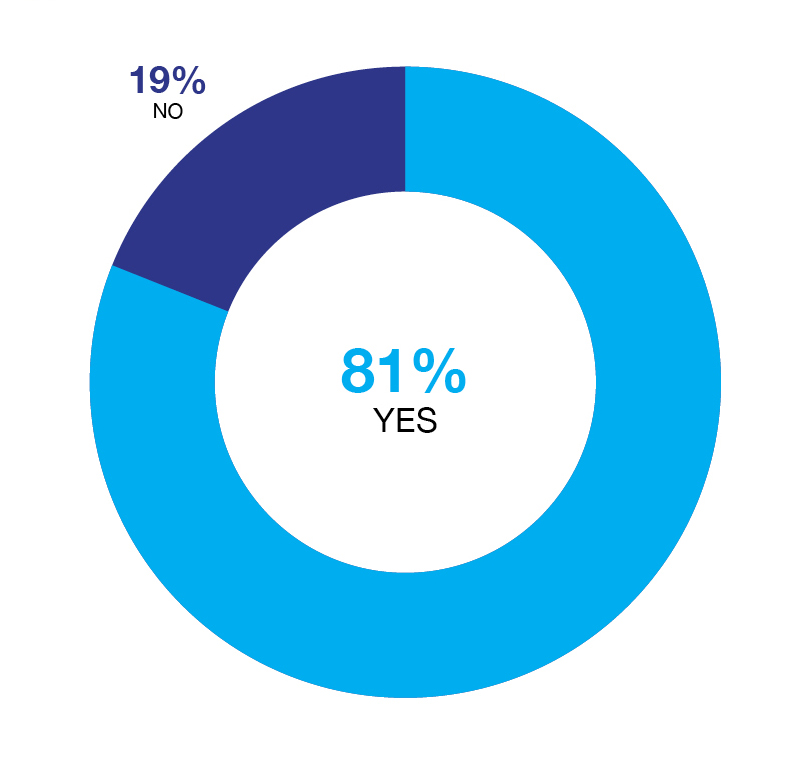
The prevalence of mental health issues has risen since the onset of the pandemic. One study found that 35% of women have moderate to severe levels of depression, 27% of women have moderate to severe levels of stress and 37% of women between 18 and 24 report suicidal thoughts. Employers have a responsibility to help support their workforce’s mental health, whether that be through offering EAP resources, making sure counseling or psychiatric treatment is covered under health insurance plans, or simply lessening the stigma by talking about it.
Does your company offer fertility benefits?
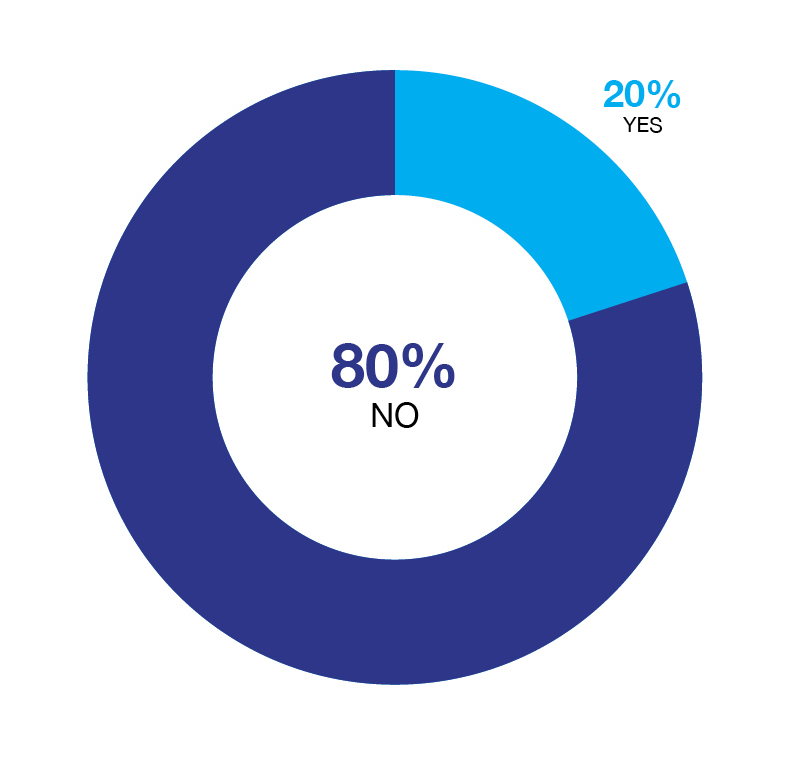
Roughly 1 in 8 couples are known to struggle with infertility. Coverage of fertility benefits is growing throughout U.S. companies, though the range of what’s covered varies. Some companies offer stipends for egg freezing or IVF treatment while others simply cover appointments with specialists. As mentioned in a recent Fortune article, more companies are considering adding fertility benefits to their repertoires in an effort to attract and retain employees.
In our survey, representatives from three publicly identified companies responded saying they offer fertility benefits. Hy-Vee said they’re available to full-time employees and include treatment reimbursement up to $5,000. The company also offers an adoption reimbursement up to $3,500 per adoption for full-time employees. Happy Medium offers a $2,000 reimbursement each year for fertility services. The University of Northern Iowa said fertility benefits are offered through its medical insurance.
Should businesses and organizations implement salary transparency policies to help address pay inequity?*
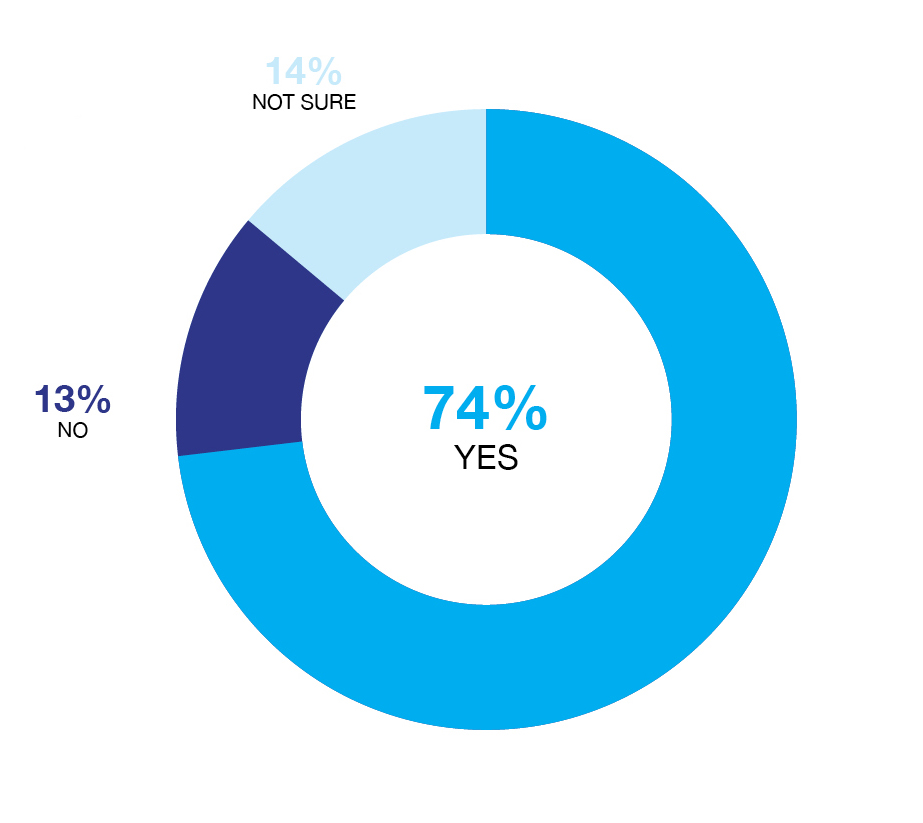
There’s no silver bullet to solve the gender pay gap or pay inequity. But experts agree that the best way to address the issue is by talking about it and acknowledging that it exists. Many experts believe that pay transparency policies would help. In a previous Fearless article, University of Iowa professor Beth Livingston argued transparency is useful for promoting equity in workplaces. “It provides a check on manager actions and pay decisions, while also demonstrating trust in employees. … Research has shown that pay transparency can actually improve employee motivation! When the process and outcomes around compensation are clearer, employees may actually perform better while simultaneously promoting equity and requiring companies to think through their compensation decision-making in more depth.
- “In many small businesses this happens naturally. In large corporations, I think management should be transparent about pay, including incentives and bonuses.”
- “State employees have salary transparency, and disparity still happens. Anything we can do to improve how much people know and can make informed decisions helps.”
- “It may be hard to keep it confidential depending on the size of the business. Privacy is still important.”
- “Employees have a right to know how their pay compares to that of their co-workers to know how their work is valued.”
- “I’ve never understood why salary transparency isn’t the norm. If they can justify pay differences, transparency should be a non-issue.”
- “Workers in general leave a lot of money on the table merely due to lack of information. It’s difficult to make informed decisions without information, and if that information is held in secret entirely on the side of the employer to their benefit, the field is unlevel as soon as you step through the door.”
Does your company have pay transparency practices or policies?
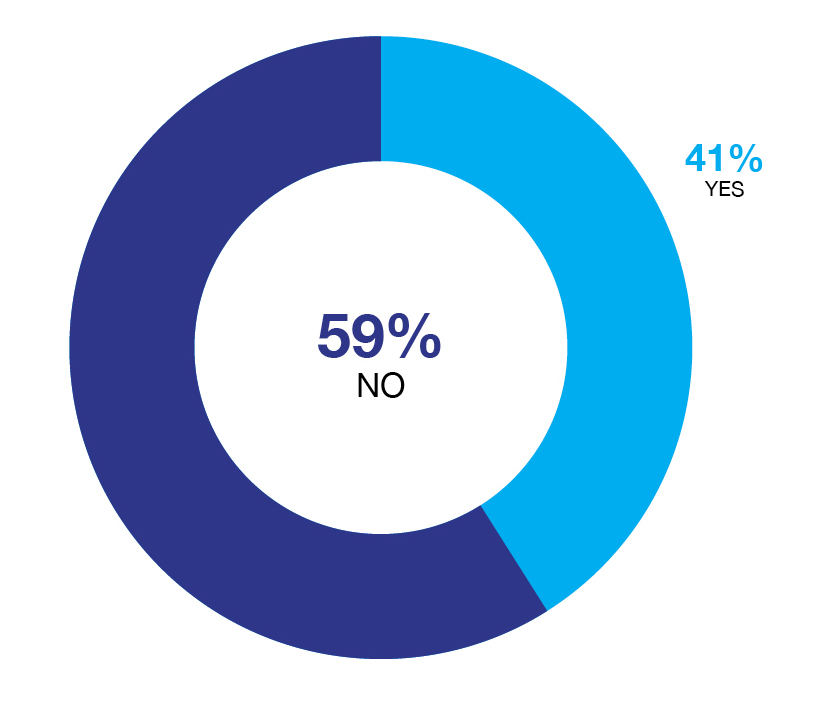
In 1997, Congress first introduced the Paycheck Fairness Act, which would ban employers from asking about salary history, require employers to prove why pay disparities exist and bolster legal protections for those who file sex-based wage discrimination lawsuits or class actions. It has passed every year in the House since 2010, but never in the Senate. That leaves private companies and organizations to set their own practices and policies. In organizations that fall under the umbrella of the state or municipal governments, compensation is public record.
Some examples of practices and policies around pay transparency included:
- “Last year, we transitioned to pay equity and transparency by distributing a spreadsheet with everyone’s compensation listed alongside industry standards. I had a one-on-one meeting with each staff person to address any questions or concerns. This has increased trust and equity within our organization. I used the average of several resources to determine the local industry standard then paid each employee just above the industry standard or a living wage ($15/hour), whichever was higher. The average entry or mid-level employee received a 43% pay increase in one year.” – the Beacon
- “We post portions of salary ranges externally, and employees can request a salary range for any open role.” – Bankers Trust
- “Pay is reviewed once a year or any time an opportunity organically comes up to discuss them.” – Iowa Center for Economic Success
- “We have a transparent step-and-grade system installed and about to be introduced to staff.” – Barbara Stinson on behalf of World Food Prize Foundation
When your company posts a job opening, is a salary or wage range included in the post?

In recent years, several states and cities have passed laws that require employers to post salary information for job openings, promotions and transfer opportunities. Research shows keeping salaries secret disproportionately harms women and people of color, who are less likely to negotiate base salaries and raises. Another argument for doing so is that it saves time by weeding out applicants whose salary expectations don’t match up. “I don’t want to have someone spend the time and energy applying if we aren’t able to offer what they are looking for or need,” Sarah Noll Wilson said.
Does your company offer retirement benefits or a 401(k) match?
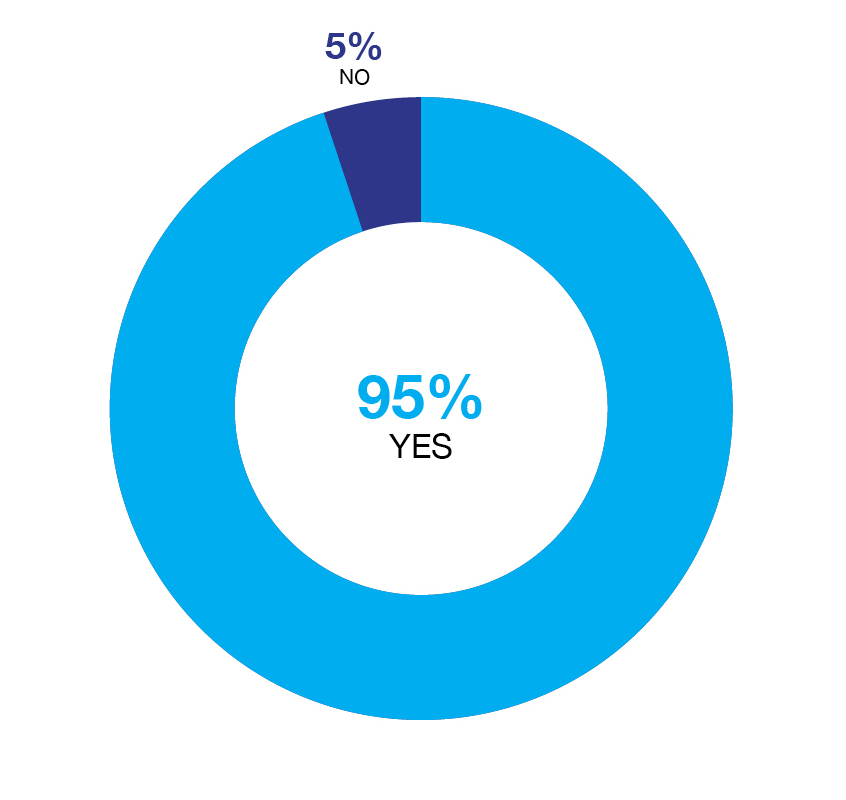
Women experience many barriers when it comes to saving for retirement. On average, women earn less over the course of a lifetime than men. Gaps in employment for mothers who have to take time off to care for children affect earning potential – one study found that for every child a woman has, her income falls by an average of 4 percentage points.
Retirement benefits described in our survey varied. The most common responses were companies providing a 2% or 3% match to 401(k) plans. Other companies put limits on matches; for example, the company would match 100% up to 6% of an employee’s contribution. Another respondent indicated they’re part of an ESOP company, so they receive shares each year in their company’s stock.
Does your company offer free or low-cost professional development opportunities?

Whether formal or informal, participation in professional development opportunities is crucial for advancement. Many formal trainings or conferences can come with a price tag of hundreds or thousands of dollars, causing a barrier to access if an individual can’t attend on their employer’s dime or afford it themselves.
Examples of development opportunities included:
- “We invest in our colleagues’ development through formal paths such as certifications and workshops to informal paths, such as mentoring, stretch assignments, books and involvement in strategic decisions.” – Sarah Noll Wilson
- “We’ve created two internal leadership development programs and also offer a new manager bootcamp and several free trainings to all team members on topics ranging from mental health to leadership to personal development.” – Bankers Trust
- “We provide $1,200 – $2,000 annual support to an employee for relevant professional development training and conferences.” – World Food Prize Foundation
Does your company offer affinity groups for underrepresented employees?
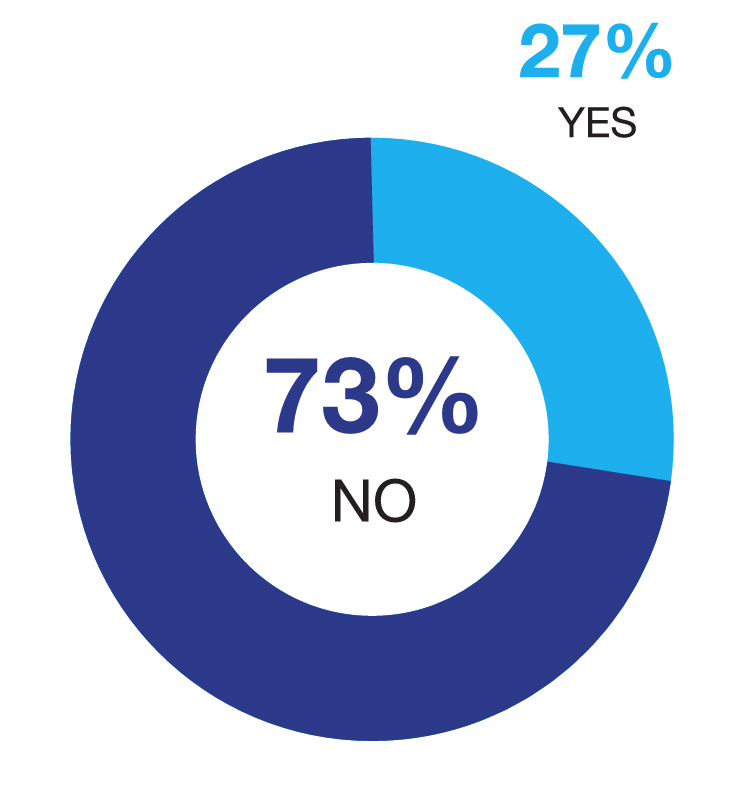
Affinity groups, also commonly called employee resource groups, are organized communities of employees within a workplace who share identities, whether gender, ethnicity, religious affiliation, ability or lifestyle. They exist to provide support and foster a safe environment where people can bring their whole selves to the table.
Examples of affinity groups that respondents included in our survey were ones for women, LGBTQ folks, Asian-Americans, Black people, Hispanic/Latino people, veterans and new moms. (Read a guest opinion piece in Fearless about Bankers Trust’s women’s group: https://fearlessbr.com/womens-groups-career-development/).

Final thoughts from Megan Milligan, president and CEO of Iowa Center for Economic Success
On why she implemented the policies and benefits that the Iowa Center for Economic Success offers: “The base of any benefit we offer is, ‘What is real life?’ How do you legally, equitably manage that in a way that you get the work done and you’re good stewards of the dollars and revenue that comes through your door, but also that your employee feels like they’re a part of the mission, not just a cog in the wheel to get a certain outcome done? … I think the reason I wanted to be a boss was to make sure that other people had access to [the benefits]. I don’t particularly like being a boss, except that I know I can make normal expectations for people. … People are working harder than ever. You just have to give grace alongside high expectations.”
On why she’s working to remove gender differences within the language of benefits and policies: “I did not experience any gender differences in my own life in terms of discrimiantion or things I couldn’t access until I had children. That became the great divide. … For me, my cause was changing the word ‘mom’ to ‘parents,’ and starting to proactively raise up the fathers. … Until you start treating dads a certain way at work, you’re not going to get moms to be treated a certain way. I sat with my co-workers the other day and asked, “What benefits do we offer or do we need to offer that are just for women?” We couldn’t come up with any. Someone said, ‘miscarriage.’ Well, we should be telling the dad to take some time off, too. They said, ‘What about infertility?’ To that I said that they should go together to the clinic. We’re trying to un-genderize. If we’re not doing that, then we’re leaving a whole other group of people out because there are people who are gender-fluid or don’t identify with a gender. … We have to start acting like where we want to get to. If where we want to get is total equality and equitable workplaces, let’s just start there.”
On why she hates the term “work-life balance”: “We treat our employees like people who have lives outside of our office and recognize that those lives are happening simultaneously to when they’re at work. … When did my personal life become one thing and my job another? A lot of us are lucky enough to pursue careers that are part of my identity. My job is also my hobby. It’s my social hour. It’s how I learn. It’s how I get away from my children. So why did they become two separate buckets that we have to segregate? It all overlaps.”
This article appeared in the weekly Fearless e-newsletter. Sign up to receive it for free at https://fearlessbr.com/e-newsletter/.


